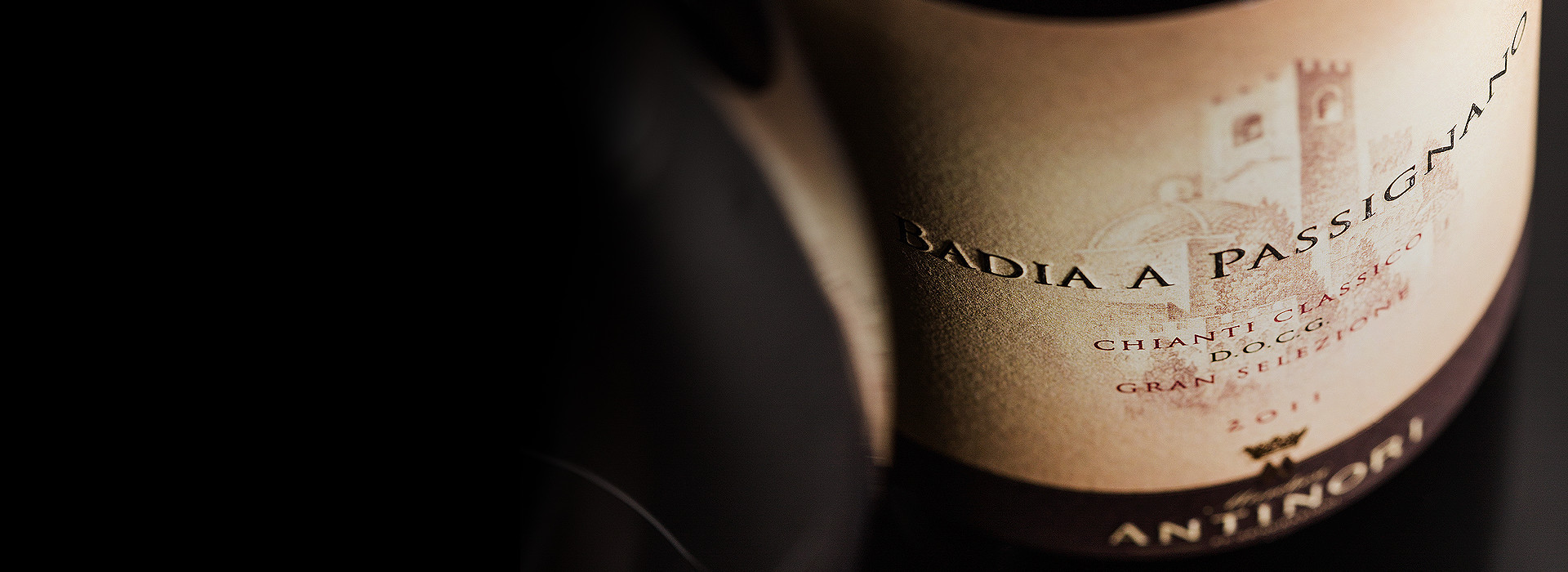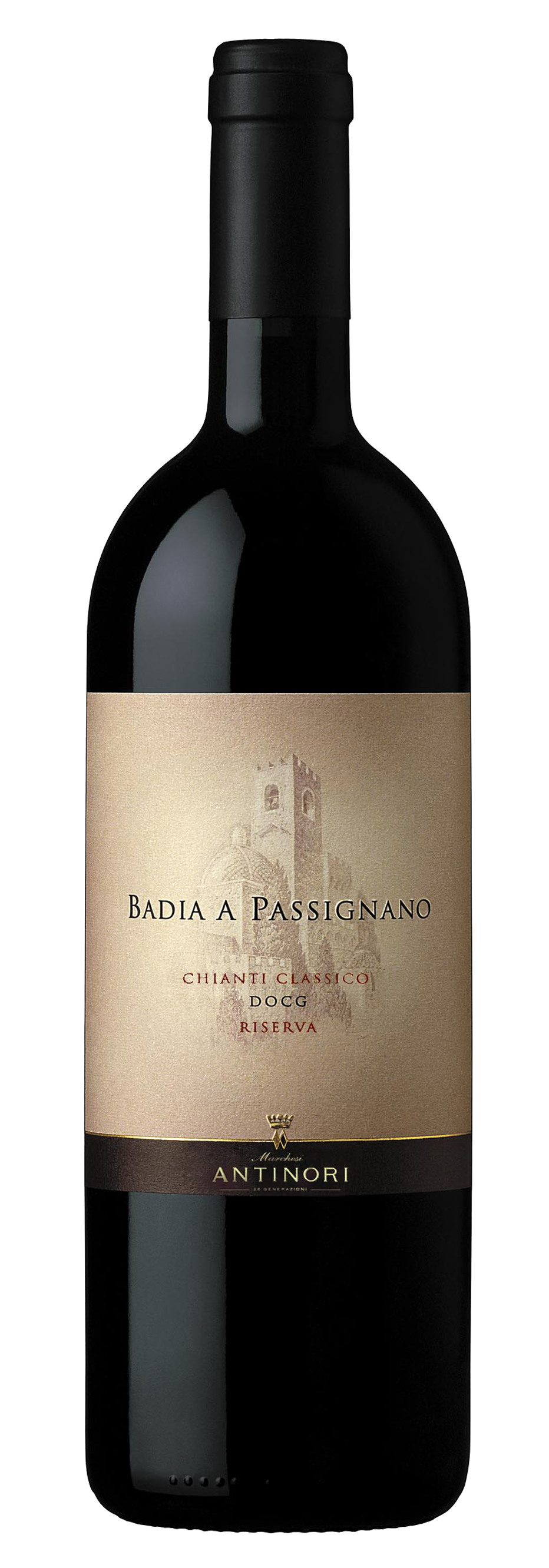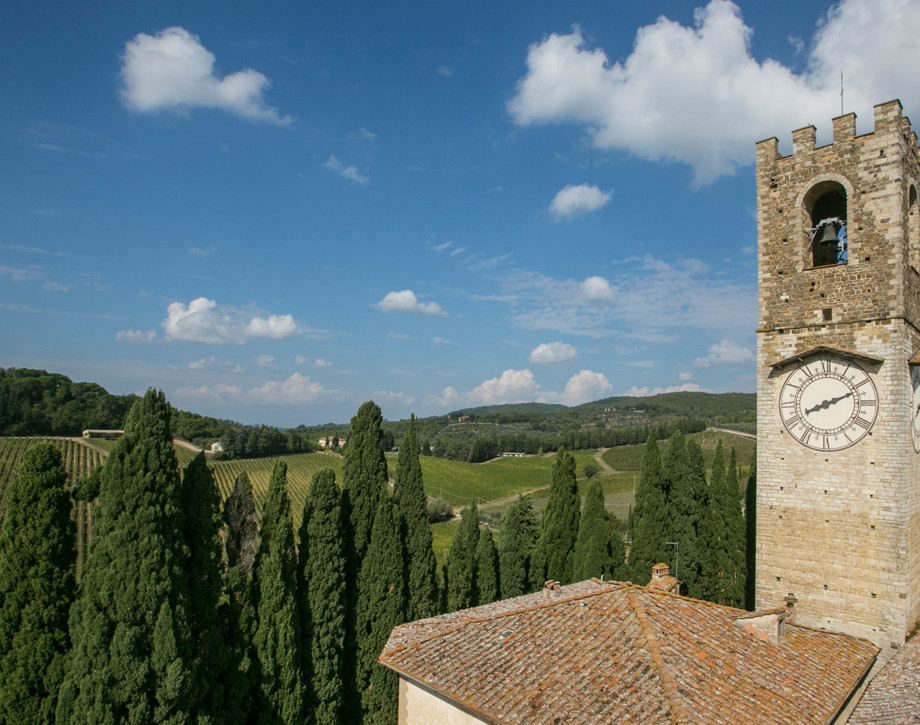Badia a Passignano

Climate
A rainy autumn and a winter with fairly low average temperatures and some snow, resulted in later development of foliage (12-15 days) than last year. As if to compensate for this delay, favourable spring weather conditions enabled the vines to develop about 10 days earlier than average. The month of June, July and August were unusually cool with average temperatures of 24°C and plenty of rain in August. This created some problems for the ripening process and the subsequent harvest but the grapes harvested were healthy and completely ripe, up to the standard of recent vintage years and rich in potential.
Vinification
The grapes grown in the vineyards surrounding Badia di Passignano were carefully selected and picked about 10 days later than the usual Sangiovese harvest period, due to rainfall in August. After destemming and soft crushing the grapes were placed in stainless steel vats and from the beginning of maceration onwards showed good potential both in polyphenolic substances and aromas. After extremely delicate pumping over and délestage the must completed alcoholic fermentation and remained on the skins for about 15 days. Within the end of the year the wines spontaneously completed malolactic fermentation in new Hungarian oak barriques (300-litre and 225-litre) and a small percentage in new French oak barriques (225-litre). After malolactic fermentation the wines were selected, blended and replaced in the same barriques for about 14 months. After ageing the wine from every single barrique was tasted and after further selection it was bottled and aged in the bottles for another 12 months.
Historical data
Badia a Passignano Gran Selezione is produced exclusively from the finest Sangiovese grapes harvested from its namesake vineyard located in the heart of the Chianti Classico region. The region has been respected and appreciated for its outstanding wine production since the year 1000. The vineyards grow at an altitude of approximately 300 meters (984 feet) above sea level on soils rich in limestone with a fair amount of clay. The wine is aged in the historic cellars under the Badia (abbey) of Passignano that dates back to the 10th century.
Tasting Notes
Intense ruby red colour, a wide range of fruity aromas on the nose with nicely expressed hints of liquorice and ripe blackberries. The palate is very well-balanced and complex with good acidity, elegantly backed up by the fruit. When released the Badia a Passignano 2005 was very stylish and well-rounded with characteristic integrity and distinctively lingering throughout the tasting.
Awards
I Vini Di Veronelli 2009 Super Tre Stelle Italy

The Wine
Badia a Passignano Gran Selezione is produced exclusively from the finest Sangiovese grapes harvested from its namesake vineyard located in the heart of the Chianti Classico region. The region has been respected and appreciated for its outstanding wine production since the year 1000. The vineyards grow at an altitude of approximately 300 meters (984 feet) above sea level on soils rich in limestone with a fair amount of clay. The wine is aged in the historic cellars under the Badia (abbey) of Passignano that dates back to the 10th century.

Climate
A rainy autumn and a winter with fairly low average temperatures and some snow, resulted in later development of foliage (12-15 days) than last year. As if to compensate for this delay, favourable spring weather conditions enabled the vines to develop about 10 days earlier than average. The month of June, July and August were unusually cool with average temperatures of 24°C and plenty of rain in August. This created some problems for the ripening process and the subsequent harvest but the grapes harvested were healthy and completely ripe, up to the standard of recent vintage years and rich in potential.
Vinification
The grapes grown in the vineyards surrounding Badia di Passignano were carefully selected and picked about 10 days later than the usual Sangiovese harvest period, due to rainfall in August. After destemming and soft crushing the grapes were placed in stainless steel vats and from the beginning of maceration onwards showed good potential both in polyphenolic substances and aromas. After extremely delicate pumping over and délestage the must completed alcoholic fermentation and remained on the skins for about 15 days. Within the end of the year the wines spontaneously completed malolactic fermentation in new Hungarian oak barriques (300-litre and 225-litre) and a small percentage in new French oak barriques (225-litre). After malolactic fermentation the wines were selected, blended and replaced in the same barriques for about 14 months. After ageing the wine from every single barrique was tasted and after further selection it was bottled and aged in the bottles for another 12 months.
Historical data
Badia a Passignano Gran Selezione is produced exclusively from the finest Sangiovese grapes harvested from its namesake vineyard located in the heart of the Chianti Classico region. The region has been respected and appreciated for its outstanding wine production since the year 1000. The vineyards grow at an altitude of approximately 300 meters (984 feet) above sea level on soils rich in limestone with a fair amount of clay. The wine is aged in the historic cellars under the Badia (abbey) of Passignano that dates back to the 10th century.
Tasting Notes
Intense ruby red colour, a wide range of fruity aromas on the nose with nicely expressed hints of liquorice and ripe blackberries. The palate is very well-balanced and complex with good acidity, elegantly backed up by the fruit. When released the Badia a Passignano 2005 was very stylish and well-rounded with characteristic integrity and distinctively lingering throughout the tasting.
Awards
I Vini Di Veronelli 2009 Super Tre Stelle Italy

Badia a Passignano
Badia a Passignano is located above the town of Sambuca Val di Pesa, just 3 kilometers south of the Tenuta Tignanello estate. The property extends over an area of 223 hectares (551 acres), of which 65 hectares (160 acres) are planted with vines. The vineyards grow at an altitude that varies between 250 meters (820 feet) and 300 meters (984 feet) above seal level on calcareous soil in one of the most naturally endowed and beautiful environments in the Chianti Classico region. The estate’s historical importance in the Chianti region is well documented in hundreds of volumes that are kept in the Florence State Archives that provide descriptions and details about the Sangiovese vineyards and local crops over the centuries. Further proof of this came to light in 1983 when a thousand year old vitis vinifera plant was discovered on the land surrounding Badia a Passignano.

Soil
Predominantly calcareous


















